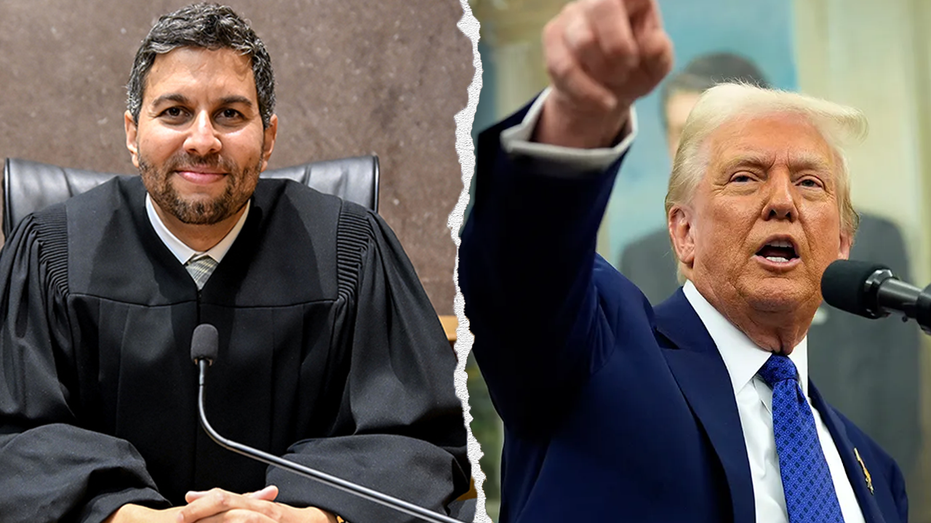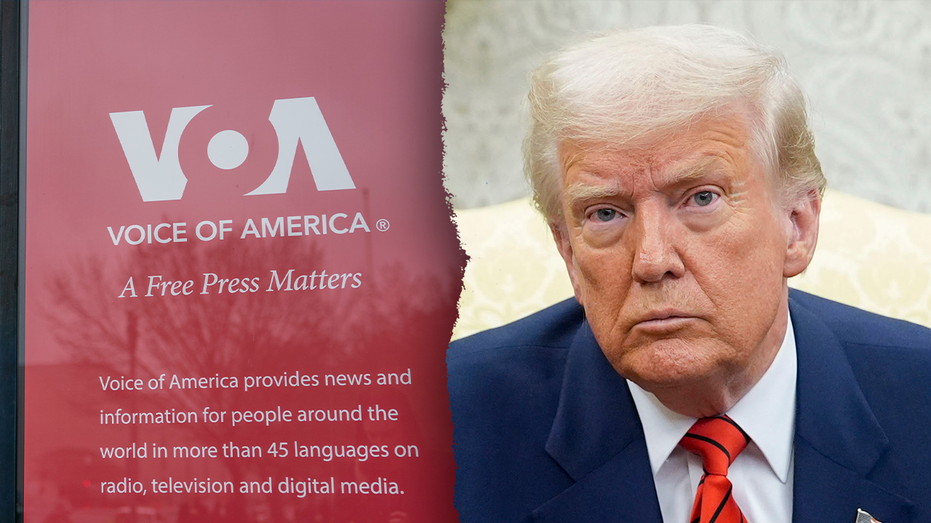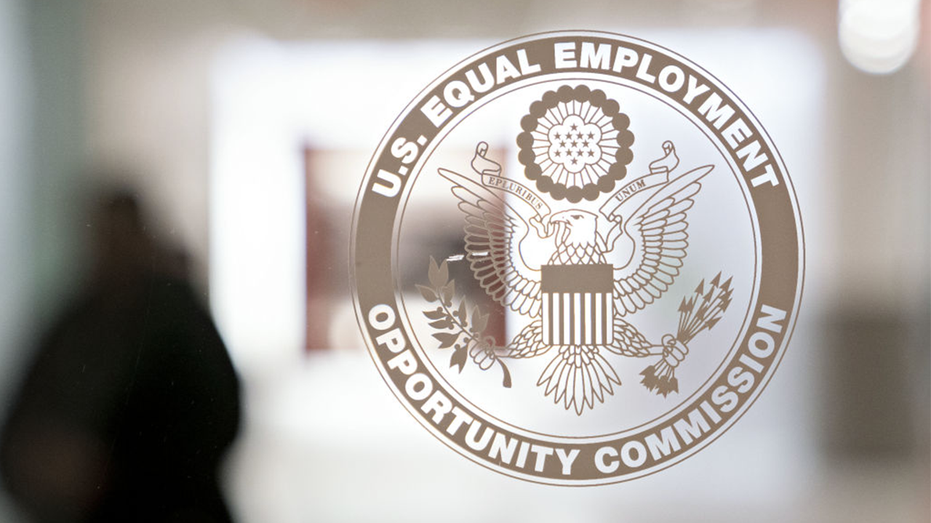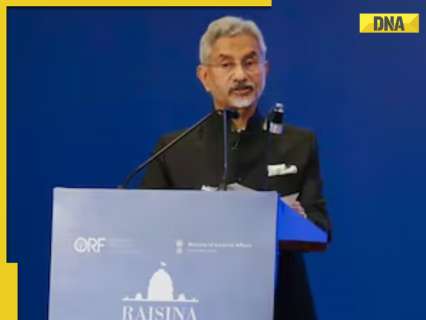These are the judges going toe to toe against Trump’s agenda

President Donald Trump has signed more than 80 executive orders since returning to the White House in January — prompting more than 100 lawsuits against his administration. While Democratic lawmakers have accused the Trump administration of launching a “constitutional crisis” within the U.S. as a result of these orders, the White House has claimed that “low-level” judges have issued unconstitutional injunctions barring Trump from implementing his agenda and that it will appeal adverse rulings. “You cannot have a low-level district court judge filing an injunction to usurp the executive authority of the President of the United States,” White House press secretary Karoline Leavitt told reporters Friday. “That is completely absurd. … It’s very clear that there are judicial activists throughout our judicial branch who are trying to block this president’s executive authority.” Here are some of the judges, appointed under the Obama and Biden administrations, who’ve pushed back against Trump’s orders: Boasberg has served as the chief judge of the United States District Court for the District of Columbia since March 2023, and was first appointed as a judge to the District Court in March 2011 under the Obama administration. Boasberg issued several key rulings on various cases during Trump’s first administration. For example, he blocked Arkansas, Kentucky and New Hampshire from implementing work requirement waivers for Medicaid recipients, after the Trump administration’s Department of Health and Human Services unveiled a policy permitting states to enforce the waivers for Medicaid recipients. Ultimately, the U.S. Court of Appeals for the D.C. Circuit issued a ruling in February 2020 upholding Boasberg’s previous decision in the Kentucky and Arkansas case. In the ruling, the appeals court said that former Health and Human Services Secretary Alex Azar “failed to analyze whether the demonstrations would promote the primary objective of Medicaid — to furnish medical assistance.” The Supreme Court then dismissed all pending cases related to the Medicaid work requirements in April 2022. WHITE HOUSE BLASTS JUDGE FOR ATTEMPTING TO HALT DEPORTATION FLIGHTS TO EL SALVADOR: ‘NO LAWFUL BASIS’ On Saturday, Boasberg issued an order halting the Trump administration from deporting migrants under the Alien Enemies Act of 1798, which permits deportation of natives and citizens of an enemy nation without a hearing. However, the flight continued to drop off the migrants in El Salvador, and Leavitt said Sunday the order had “no lawful basis” since Boasberg issued it after the flight’s departure from U.S. airspace. Boasberg graduated from Yale College in 1985 and Yale Law School in 1990. He also served a seven-year term from 2014 to 2021 on the United States Foreign Intelligence Surveillance Court, which handles surveillance requests for foreign intelligence gathering. Sorokin, an Obama appointee, joined the United States District Court for the District of Massachusetts in 2014, after previously serving as magistrate judge on the same court. Sorokin spearheaded a delayed-sentencing program in Massachusetts known as the Repair, Invest, Succeed, Emerge, or RISE, program. The program offers some criminal offenders a yearlong delay in sentencing for some criminal offenders who qualify for pretrial release as they undergo an intensive supervision program. “I’m thrilled with how the restorative justice part of RISE has gone, so we’re expanding,” Sorokin said at an event at Columbia Law School in 2020. “I think it’s lawful. I think it’s correct. I think it’s what we ought to be doing.” Sorokin said his motivation to launch the RISE program stemmed from a conversation he had with a man convicted of bank robbery who explained he wanted to apologize to the bank teller and to his sisters for committing the crime. Sorokin blocked the Trump administration from implementing an executive order to ban birthright citizenship in February — joining other judges from Maryland and Washington state in issuing nationwide injunctions against the ban. The Trump administration requested the Supreme Court step in Friday and allow it to execute the order, and the Supreme Court requested responses from challengers by April 4. Sorokin attended Columbia Law School and has worked as a professor for Boston University School of Law. Ali, a Biden appointee, is one of the newest judges to the United States District Court for the District of Columbia, joining the court in December 2024. Ali also helped launch the MacArthur Justice Center’s Washington, D.C., branch in 2017, a nonprofit law firm that specializes in criminal justice reform and civil rights issues. Ali, who eventually led the firm as the executive director, argued and won two cases before the Supreme Court on behalf of the MacArthur Justice Center. Ali’s ties to the firm came under scrutiny during his confirmation hearing in February 2024 before the Senate, where lawmakers asked him about remarks his MacArthur Justice Center colleague, Cliff Johnson, made in 2020 asserting that defunding the police paves the way for a “movement toward making police departments obsolete.” WHO IS JUDGE AMIR ALI? THE BIDEN-APPOINTED FEDERAL JUDGE AT THE CENTER OF TRUMP’S USAID BATTLE However, Ali told lawmakers that he didn’t espouse those views, nor did the MacArthur Justice Center. “Let me be very clear about this,” Ali said. “I have never advocated for taking away police funding. I would not take that position, and the MacArthur Justice Center has not taken that position.” On March 11, Ali issued a ruling that determined the Trump administration likely exceeded its constitutional authority when it sought to halt payments the State Department and the U.S. Agency for International Development (USAID) owed to contractors amounting to $2 billion in funding Congress had approved. Ali has also taught classes on civil, criminal and appellate litigation at schools, including Harvard Law School and the Georgetown University Law Center. Howell, an Obama appointee, joined the United States District Court for the District of Columbia in 2010. She previously served as staff and as general counsel of the United States Senate Committee on the Judiciary from 1993 to 2003. Howell ruled against the Trump administration March 6, and wrote in her ruling that Trump did not have the authority to fire members of
‘Not surprising…gave clean chit to China’: Congress launches scathing attack on PM Modi over India-China remark on podcast

China’s Foreign Ministry spokesperson Mao Ning appreciated PM Modi’s positive remarks on China-India relations during a podcast interview with Lex Fridman and also noted that being partners in mutual success is the only correct choice for the two countries.
Trump accuses Big Media of ‘illegal’ reporting, virtually abolishes Voice of America

President Trump has spent the last decade railing against fake news, a phrase that’s now deeply embedded in our culture. He has accused the media of being relentlessly biased against him – which is largely true – and called out journalists by name. He has sued such outlets as ABC News (which paid him $16 million), CBS and the Des Moines Register. He has charged that Politico received payments for negatively covering him – it turned out these were routine subscriptions, and for the New York Times as well – and then canceled many of the subscriptions. TRUMP ORDERS THE DISMANTLING OF GOVERNMENT-FUNDED, ‘PROPAGANDA’-PEDDLING MEDIA OUTLET But in a controversial speech at the Justice Department, Trump went further than ever before. He said the Times, the Washington Post and the major networks were engaged in “illegal” reporting. The president did not specify what was illegal about it. But perhaps there’s a short distance between Trump’s accusation and a future prosecution? The DOJ speech drew heavy coverage. The Times said he “veered from his prepared remarks to lash out at lawyers and former prosecutors by name in a venue dedicated to the impartial administration of justice. He also accused the department’s previous leadership of trying to destroy him and declared former President Joseph R. Biden Jr. the head of a ‘crime’ family.” The Post quoted Trump as saying his enemies had “launched one hoax and disinformation operation after another, broke the law on a colossal scale, persecuted my family, staff and supporters, raided my home, Mar-a-Lago, and did everything within their power to prevent me from becoming the President of the United States.” The paper added: “It is rare for a president to visit the Justice Department — which has kept safeguards between the White House and the law enforcement agency in the post-Watergate era to ensure that politics don’t interfere with law enforcement investigations.” But here’s the fascinating part. The Times and the Post made no mention of Trump’s “illegal” reporting charge. Didn’t give it as much as a paragraph. Couldn’t squeeze it in (I say in jest, since space is unlimited in the digital age). I see two possible explanations for this. One is that they are so offended by the president’s accusation, which they view as false, that they don’t want to give it any oxygen and share it with readers. In other words, when the president is shooting arrows at you, it’s best to deflect them. The other is that they fear that there might be a prosecution down the road – given Trump’s history of civil lawsuits – and don’t want to cross him on this issue. In short, they are intimidated by the president. But here’s the thing: If two of the nation’s preeminent newspapers aren’t going to defend themselves on the charge of illegality, who is? How can they expect any backing when they won’t stand up for themselves, by censoring Trump’s remarks? Meanwhile, over the weekend, the president all but abolished the Voice of America and Radio Free Europe with an executive order aimed at its parent agency – whose special adviser is former Arizona candidate Kari Lake. Trump ordered 1,300 journalists, executives and other staffers placed on indefinite leave. His argument is that they’re part of the radical left. He’s a longtime critic of VOA, having once called it the “voice of the Soviet Union.” SUBSCRIBE TO HOWIE’S MEDIA BUZZMETER PODCAST, A RIFF ON THE DAY’S HOTTEST STORIES Carla Babb, the VOA’s Pentagon correspondent, posted this: “A silencing of VOA will be celebrated by communists, autocrats and ayatollahs whose lies we shed light on.” The VOA was launched during World War II and credited with successfully countering enemy propaganda for decades. But there’s a legitimate debate to been had about who the “enemy” is these days, given Trump’s friendly relationship with Vladimir Putin. What’s more, people aren’t huddled around their radios as they were in 1942. But those who were laid off indefinitely consider themselves independent journalists – and suddenly find themselves out of a job.
US equal opportunity commission demands 20 law firms disclose DEI employment practices

The U.S. Equal Employment Opportunity Commission is requesting data from 20 law firms about employment practices to increase diversity, equity and inclusion, which the federal agency warns may be illegal. The commission’s acting chair, Andrea Lucas, sent letters to the firms seeking detailed information on DEI programs that may be in violation of Title VII of the Civil Rights Act of 1964, which prohibits employment discrimination based on race, color, religion, sex and national origin. Some of the companies have made legal challenges to President Donald Trump’s policies targeting DEI or have connections to his political opponents. Perkins Coie; Hogan Lovells; Ropes & Gray; and WilmerHale are among the firms currently representing plaintiffs in lawsuits against the Trump administration. Lucas said some of the firms had made public statements expressing their commitment to diversity in their workforces. At least two of the firms had numerical goals for recruiting lawyers based on their race, ethnicity, sexual orientation and gender identity. TRUMP EQUAL OPPORTUNITY COMMISSION PUTS EMPLOYERS ‘ON NOTICE’ TO STOP ‘ANTI-AMERICAN BIAS’ She expressed concern that the firms’ employment practices “may entail unlawful disparate treatment in terms, conditions, and privileges of employment, or unlawful limiting, segregating, and classifying” based on race, sex and other protected characteristics. “The EEOC is prepared to root out discrimination anywhere it may rear its head, including in our nation’s elite law firms,” Lucas said in a statement. “No one is above the law—and certainly not the private bar.” The letters requested information about the internships, scholarships and fellowships the firms offer to law students, as well as the firms’ hiring and compensation practices. Lucas also asked for the name, sex and race of every lawyer who has worked at or applied for a job at the firms since 2019 and if each of them participated in diversity programs. Some of the information was asked to be included in a “searchable Excel spreadsheet.” ‘UNLAWFUL DEI-MOTIVATED’ WORKPLACE DISCRIMINATION TO BE ROOTED OUT BY TRUMP’S NEW ACTING EEOC CHAIR The EEOC can investigate companies’ employment practices and file lawsuits over allegations of discrimination, but only after a worker or one of the agency’s five commissioners brings a formal complaint. The agency gave no indication that Lucas had filed complaints against any of the firms. Trump has sought to eliminate DEI programs across the country, including in the federal government, higher education and the private sector. The president has also taken action against high-profile law firms over their DEI practices. Trump issued executive orders this month targeting Perkins Coie as well as Paul, Weiss, Rifkind, Wharton & Garrison over the two firms’ alleged discriminatory internal diversity policies and previous work for his political opponents. The orders revoked security clearances for lawyers at the firms and restricted their government access and federal contracting work. The order targeting Perkins Coie also directed Lucas to “review the practices of representative large, influential, or industry-leading law firms” even though the commission was designed to operate independently of the White House. Perkins Coie sued on allegations that the order violated its rights under the U.S. Constitution. A judge temporarily blocked parts of the order last week. Some companies have previously adopted policies to encourage diversity from their outside law firms. Lucas, in the letters, asked law firms to identify clients since 2019 that have had “diversity requirements” or stated preferences for employee staffing. She also asked for the firms’ actions in response to the client requirements, including producing related documents. Reuters contributed to this report.
NASA astronauts stuck in space returning to Earth: All you need to know

Two NASA astronauts are headed to Earth after spending nine months stranded in space. Sunita Williams and Barry Wilmore departed the International Space Station (ISS) early on Tuesday morning and are expected to splash down off the coast of Florida after a journey of 17 hours. Boeing’s Starliner, their original return spacecraft, was deemed unsafe for the journey home, forcing the astronauts to stay in space much longer than planned. Here’s all you need to know about their extended stay and long-awaited return: Who are the two astronauts who were stuck in space? The two astronauts stranded on board the International Space Station (ISS) are 59-year-old Sunita “Suni” Williams and Barry “Butch” Wilmore, 62, both veteran NASA-trained space travellers. Williams, the current commander of the ISS and a retired US Navy officer, joined NASA in 1998. Over her career, she has spent 322 days in space and completed nine spacewalks. She previously held the record for the most spacewalks by a female astronaut, until 2017 when the title went to Peggy Whitson, who completed 10. Advertisement Wilmore first flew to space in 2009 on board the Space Shuttle Atlantis. Before the Boeing Starliner mission, he had logged 178 days in space. He has served as a flight engineer and commander on previous ISS missions, conducting research on plant growth in space, the effects of microgravity on the human body and environmental changes on Earth. In the Boeing mission, Wilmore served as the commander and Williams was the pilot. When and how are they coming back to Earth? The SpaceX Crew Dragon carrying Wilmore and Williams undocked from the ISS at 1.05am ET (05:05 GMT) on Tuesday. It is expected to splash into the Atlantic Ocean just before 6pm ET (22:00 GMT). Late on Monday night, the process for Williams and Wilmore to return started. Hatch closure preparations began at 10:45pm ET (02:45 GMT). NASA is livestreaming the departure and return journey of the astronauts. They are returning on board a SpaceX Crew Dragon capsule, which had been docked at the station since September 2024. This capsule originally brought NASA astronaut Nick Hague and Russian astronaut Aleksandr Gorbunov to the ISS, with two empty seats left for Wilmore and Williams’ return. The four could not return on the same capsule until an additional crew carrying four other astronauts arrived to replace them. That has now happened. Crew-10, which docked at the ISS on Sunday at 12:04am ET (04:04 GMT), consists of NASA astronauts Anne McClain and Nichole Ayers, Japanese astronaut Takuya Onishi, and Russian astronaut Kirill Peskov. They launched from Kennedy Space Center in Florida, US, on Friday. Advertisement Why did they get stuck? Williams and Wilmore got stuck after technical issues with the spacecraft meant to bring them home. They had travelled to the ISS on board Boeing’s CST-100 Starliner as part of its first crewed test flight. The mission, under NASA’s Commercial Crew Program, aimed to develop private spacecraft for transporting astronauts to and from the station. By outsourcing low-Earth orbit missions, NASA has said it aims to focus on deep space exploration, including the Artemis missions to the moon and future human missions to Mars. During the 25-hour flight to the ISS, Starliner experienced helium leaks and a malfunctioning thruster, which helps steer and control reentry. When it arrived on June 6, four more of the 28 thrusters failed, delaying docking with the station. Although engineers restored four out of five failed thrusters, NASA deemed the spacecraft too risky for human travel and sent it back empty, leaving Williams and Wilmore stranded on the ISS. In August 2024, NASA decided to bring them back on a SpaceX vehicle. Crew Dragon-9, which launched on September 29, 2024, has been docked at the ISS since, but bringing them home earlier would have left only one US astronaut on the space station, limiting research and emergency response. Now, with their replacement members arriving on Crew-10, Williams and Wilmore are finally headed home. How long have the two astronauts been stuck in space? Williams and Wilmore have been in space since June 5, 2024, meaning they will have spent more than nine months in orbit by the time they return. Advertisement After blasting off from Cape Canaveral, Florida, in June, they were originally scheduled to stay in space for just eight days. The standard ISS rotation for astronauts is roughly six months. How did they survive in space for so long? Despite the unexpected extension of their stay, Williams and Wilmore have remained in good health and even conducted a spacewalk together in January. Life on board the ISS follows a structured routine with exercise, work and leisure. This includes regular routines on both the treadmill and resistance machine in order to maintain their bone and muscle strength. Throughout the year, several space agencies and private companies also scheduled missions to resupply the space station with food, water and oxygen, regularly replenished by cargo missions. Over Christmas, the two even enjoyed a festive dinner that included smoked oysters, crab, duck foie gras, cranberry sauce, Atlantic lobster and smoked salmon, according to The Times newspaper in London. Williams and Wilmore have also been able to maintain contact with their families through email and telephone. In an interview with Lester Holt on NBC Nightly News in November, Williams said she and Wilmore were “feeling good, working out, eating right”. “We have a lot of fun up here too,” she added. “People who are worried about us, really, don’t worry about us … We’re a happy crew up here.” Have astronauts been stuck in space before? Williams and Wilmore are not the first astronauts to face an extended stay in space due to unforeseen circumstances. There have been previous cases where astronauts had to remain in orbit longer than planned due to technical problems or geopolitical events. Advertisement The longest single spaceflight by a US astronaut was Frank Rubio’s 371-day mission on board the ISS, from 2022 to 2023, extended due to issues with
EAM S Jaishankar slams UN for labelling Kashmir ‘invasion’ into mere ‘dispute’ at Raisina Dialogue 2025: ‘Attacker and the victim were put on par’

EAM S Jaishankar termed sovereignty and territorial integrity the “bedrock of global rules.” He also spoke on political interference, where he mentioned that when the West goes into other nations, it is “apparently in the perseverance of democratic freedoms.”
Israel launches major Gaza assault, shattering ceasefire

Israel has launched a major assault on Gaza, shattering the fragile two-month-old ceasefire between its forces and Hamas. Israeli air strikes across the territory early on Tuesday killed more than 200 Palestinians, Gaza’s Government Media Office said. The dead included at least 77 people in Khan Younis in southern Gaza and at least 20 people in Gaza City in the north, medical sources told Al Jazeera. Israel strikes also hit locations in central Deir el-Balah and Rafah in the south. Israeli Prime Minister Benjamin Netanyahu said he ordered the military to take “strong action” against Hamas over its refusal to release captives taken from Israel or agree to offers to extend the ceasefire. “Israel will, from now on, act against Hamas with increasing military strength,” the Prime Minister’s Office said in a statement. The Israeli military said on Telegram that it was conducting “extensive strikes on terror targets” belonging to Hamas. Hamas, which governs Gaza, said it viewed Israel’s attacks as a unilateral cancellation of the ceasefire that began on January 19. Advertisement “Netanyahu and his extremist government are making a decision to overturn the ceasefire agreement, exposing prisoners in Gaza to an unknown fate,” the Palestinian group said in a statement. Palestinian Islamic Jihad (PIJ) accused Israel of “deliberately sabotaging all efforts to reach a ceasefire”. “We affirm that what Netanyahu and his barbaric army failed to achieve in 15 months of crimes and bloodshed, they will not succeed in achieving again, thanks to the steadfastness of our oppressed people and the courage of our mujahideen in the fields of… resistance,” the group said, according to a statement shared with Israel’s Haaretz newspaper. Injured Palestinians are brought to the Al Nasser Hospital in Khan Yunis, Gaza on March 18, 2025 [Abdallah F.s. Alatta/Anadolu] Ahmed Abu Rizq, a teacher in Gaza, said he and his family woke up the sound of “Israeli strikes everywhere.” “We were frightened, our children were frightened. We had many calls from our relatives to check, to check [on] ourselves. And the ambulance started to run from one street to another,” Abu Rizq told Al Jazeera, adding that families started to arrive at the local hospital with the “remains of their children” in their hands. Reporting from Amman, Jordan, Al Jazeera’s Hamdah Salhut said that while Israel has accused Hamas of rejecting various proposals made by negotiators, talks had been stalled after Netanyahu refused to begin negotiations on phase two of the ceasefire deal on February 6. “Several Israeli analysts, several within the political opposition and several within Netanyahu’s own government said that this was the plan all along, a resumption of the fighting, to go back to full-scale war,” Salhut said. Advertisement “And in fact, there’s a new army chief of staff, one who said that 2025 is going to be a year of war – noting that Israel still has a lot of goals to accomplish when it comes to the Gaza Strip, meaning that they are in no way finished with their military action.” Hamas has released about three dozen captives in exchange for nearly 2,000 Palestinian prisoners since the start of the ceasefire. Negotiations on the second phase of the deal, which would see the release of nearly 60 remaining captives and the establishment of a permanent ceasefire, had been at an impasse over Israel’s insistence that the first stage be extended until mid-April. Mouin Rabbani, a non-resident fellow at the Middle East Council on Global Affairs, said it was unclear if the attacks marked a single offensive or “the beginning of a larger campaign”. “The most important element of which, from Israel’s perspective, was negotiations on the second phase leading to a durable ceasefire and a full withdrawal of Israeli troops from the Gaza Strip,” Rabbani told Al Jazeera. “And that is something that the Israeli government has repeatedly said it would not do.” “In other words, [Israel] signed an agreement, knowing that it would refuse to implement it,” he said. White House Press Secretary Karoline Leavitt said Israel had consulted with United States President Donald Trump about the strikes. “As President Trump has made clear, Hamas, the Houthis, Iran – all those who seek to terrorise not just Israel but the US – will see a price to pay, and all hell will break loose,” Leavitt told Fox News. Advertisement Adblock test (Why?)
Video: Thousands of Yemenis rally in Sanaa against deadly US strikes
[unable to retrieve full-text content] Thousands of Yemeni demonstrators marched in the streets of Sanaa to protest the deadly US military strikes.
Two people killed in Israeli air strike on Deraa in southern Syria

The Israeli army said it had targeted military sites in southern Syria that posed a ‘threat to the State of Israel’. At least two people were killed and 19 others wounded after an Israeli air strike on the outskirts of the southern Syrian province of Deraa, the Syrian state news agency, SANA, has reported. The Israeli military confirmed the strikes Monday night and said it was targeting military sites that contained weapons and vehicles that belonged to the forces of ousted Syrian President Bashar al-Assad. The Israeli army “is currently striking military targets in southern Syria, including command centres and military sites containing weapons and military vehicles belonging to the old Syrian regime,” an army statement said, adding that the “military assets” posed “a threat to the State of Israel”. The army said it “will not allow the presence of military threats in southern Syria and will operate against it”. The Syrian Observatory for Human Rights said Israel targeted a military site previously used by al-Assad’s forces but now used by the army of Syria’s new government. However, this is not the first time Israel has targeted the southern Deraa province, near the Jordanian border. Earlier this month, it targeted several Syrian military assets in the same area. Advertisement The Israeli military said at the time that the military sites, which had included bases and radar systems, posed a threat that the strike was meant to “eliminate”. Reporting from Damascus, Al Jazeera’s Resul Serdar said four Israeli air strikes targeted Deraa on Monday night. “This is a strategy of Israel [to] really reduce the country’s military capacity, particularly its defence capacity, and now Israel is going further, saying well it doesn’t want any military presence in the south of Syria,” Serdar said. “Of course, for the government in Damascus [this] is a huge, huge challenge, so practically, that means they’re not in control of the southern cities of Syria,” he added. Since al-Assad was ousted, Israel has carried out hundreds of air strikes in Syria and deployed troops to a United Nations-patrolled buffer zone on the Golan Heights. While al-Assad was in power, Israel also routinely attacked Syria, bombing what it said were Iranian and Hezbollah targets. Adblock test (Why?)
Trump says he will release 80,000 pages of JFK files on Tuesday

US president says files contain ‘a lot of reading’ about assassination that has fuelled conspiracy theories for decades. United States President Donald Trump has said his administration will on Tuesday release approximately 80,000 pages of files about the assassination of John F Kennedy, whose killing has fuelled conspiracy theories for more than six decades. Speaking at the Kennedy Center on Monday, Trump said the release will contain “a lot of reading” about the assassination of the 35th US president, who was killed in Dallas, Texas on November 22, 1963. “I don’t believe we are going to redact anything. I said, ‘just don’t redact, you can’t redact’,” Trump told reporters. “But we are going to be releasing the JFK files.” Asked if he had seen what was in the files, Trump said he was aware of their contents. “It’s going to be very interesting,” he said. Trump’s remarks follow a January executive order calling for the release of all remaining records on the JFK assassination, as well as files related to the assassinations of Robert F Kennedy and the civil rights icon Martin Luther King Jr. Under the order, Trump instructed the director of national intelligence, Tulsi Gabbard, to present a plan within 15 days for the “full and complete release” of files on the JFK assassination. Advertisement Last month, the FBI said that searches it had undertaken to comply with the order had turned up about 2,400 new files related to the assassination. The circumstances of JFK’s death have captivated US society for decades, with surveys showing a majority of Americans doubt official explanations of the case. In a 2023 Gallup poll, 65 percent of Americans said they did not accept the Warren Commission’s finding that Lee Harvey Oswald, a US Marine veteran arrested over JFK’s death, acted alone in killing the president. Twenty percent of those surveyed said they believed Oswald conspired with the US government, while 16 percent said they thought that he worked with the CIA. During his first administration, Trump promised to disclose all outstanding records on the assassination but ultimately only released about 2,800 documents after the CIA and FBI requested that thousands of pages of material be withheld pending review. Former US President Joe Biden’s administration released about 17,000 more records, leaving fewer than 4,700 files withheld in part or in full. According to the National Archives, authorities have released more than 99 percent of the approximately 320,000 documents reviewed under the 1992 JFK Records Act. The law mandated the disclosure of all remaining files by October 26, 2017, unless the president determined their release would cause “identifiable harm” to national defence, intelligence operations, law enforcement or foreign relations of such gravity that it “outweighs the public interest in disclosure”. Advertisement Adblock test (Why?)

